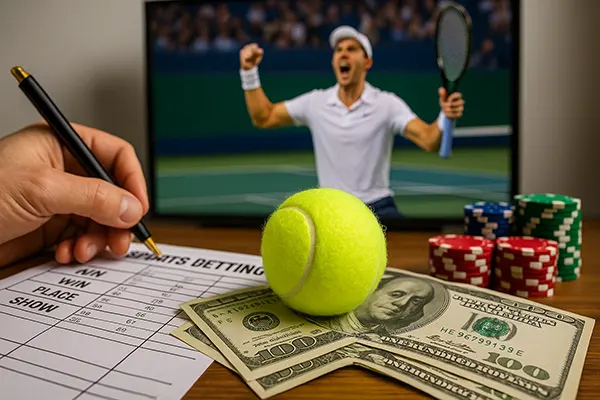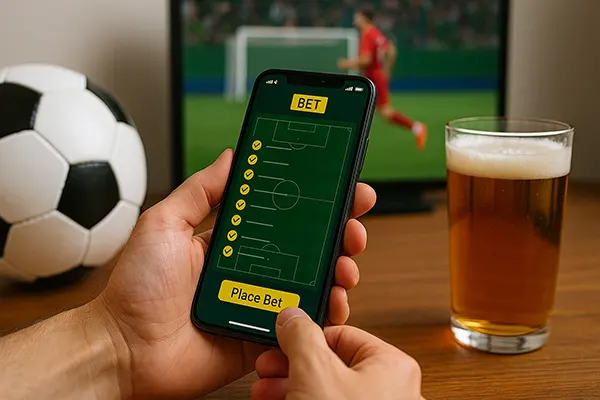
Tennis Matches with the Highest Winning Odds in Betting History
Throughout the history of tennis, there have been moments when unlikely underdogs triumphed against the odds—literally. These events not only shocked fans and analysts but also created life-changing winnings for those who dared to bet on the improbable. This article explores five of the most sensational tennis matches where betting odds soared above 50.00, offering rare insights into how bookmakers misjudged, how the media reacted, and how such events shaped the betting industry.
Top 5 Shocking Tennis Matches with Odds Above 50.00
High-odds upsets are rare in professional tennis due to the sport’s relatively low volatility compared to team-based sports. However, a few matches defied expectations so dramatically that they became part of betting folklore. Here are five such instances:
1. **Goran Ivanišević vs. Patrick Rafter (Wimbledon 2001 Final)** — Entering as a wildcard ranked 125th, Ivanišević’s odds were between 67.00 and 100.00 before the tournament. His emotional five-set victory remains one of the most profitable bets for punters.
2. **George Bastl vs. Pete Sampras (Wimbledon 2002)** — Bastl was a qualifier with odds hovering around 60.00. He defeated Sampras in straight sets, shocking the world and multiplying many stakes dramatically.
Other Legendary Upsets in Modern Betting
3. **Lukas Rosol vs. Rafael Nadal (Wimbledon 2012)** — Rosol, ranked 100th, had pre-match odds close to 80.00. He stunned Nadal in five electrifying sets, creating one of the biggest Wimbledon upsets ever recorded.
4. **Roberta Vinci vs. Serena Williams (US Open 2015)** — With Serena aiming for a calendar Grand Slam, Vinci’s odds reached 65.00. Her semifinal win crushed betting favourites but rewarded longshot bettors handsomely.
5. **Andrey Rublev vs. Roger Federer (Cincinnati Masters 2019)** — Rublev was a rising talent with odds of 55.00. He dismantled Federer in straight sets in what became a historic payout match on ATP hard courts.
Why Did Bookmakers Get It So Wrong?
The nature of odds is built on predictive models, player stats, surfaces, and public sentiment. However, when multiple underestimated variables align—like injury underreporting, player fatigue, or psychological pressure—odds fail to reflect reality.
In Ivanišević’s case, bookmakers dismissed his past injuries and emotional motivation. For Vinci, models failed to factor in Serena’s mounting pressure and Vinci’s tactical finesse. These examples reveal a gap between algorithmic forecasting and human unpredictability.
Furthermore, the betting market often overcompensates based on crowd biases. When a legend like Nadal or Federer is involved, bookmakers shift odds more conservatively to protect against massive liabilities, inadvertently widening odds for sharp bettors.
The Human Factor in Bookmaker Errors
Oddsmakers frequently struggle to price emotional resilience, last-minute injuries, or match-day psychology. These human elements can drastically influence outcomes but are hard to model.
Additionally, pre-match odds are sometimes influenced by prior head-to-head records without considering current form or fatigue. Rosol’s explosive playstyle, for instance, was underrated against Nadal’s defensive baseline strategy.
Such miscalculations underscore the thin margin between calculated risk and unforeseen victory, often resulting in historical betting outcomes.
How the Media and Players Reacted
Every one of these matches sparked a media storm. Headlines globally highlighted both the athletic upset and the betting implications. Some bookmakers even made headlines themselves by disclosing million-euro payouts to a handful of bold punters.
Players themselves reacted differently. Serena Williams, for instance, took the loss in stride, crediting Vinci’s strategy. Federer congratulated Rublev for outstanding play. Nadal acknowledged Rosol’s fearless performance despite media speculation about injury.
In cases like Ivanišević, the underdog became a cult hero, and media narratives fuelled his legacy. Such stories live on as emotional and financial case studies in sports betting history.
Public Perception and Betters’ Excitement
These upsets often reshaped public interest in tennis betting. Forums, communities, and tipster circles exploded with new theories and strategies based on hindsight analysis.
Media narratives helped shape an image of unpredictability in tennis, making casual and professional punters more eager to spot the next “giant-killer.”
Moreover, interviews with lucky winners reinforced the idea that “smart” longshots could result in enormous payouts—feeding both curiosity and caution in equal measure.

The Lasting Impact on Tennis Betting Popularity
Such historical wins did more than enrich individual bettors—they changed the ecosystem of tennis betting. Platforms saw spikes in engagement post-upsets, with record numbers of new accounts and betting volume following these matches.
Bookmakers adjusted accordingly. They now introduce more dynamic in-play odds, risk limitation tools, and early cash-out options, acknowledging the volatility brought by such unexpected results.
Additionally, punters have become more analytical. There’s a notable increase in the use of stats-driven betting, live odds tracking, and pre-match player condition analysis, indicating a shift towards informed risk-taking.
The Rarity and Value of Giant Upsets
Despite their appeal, such wins remain rare. Most bettors are cautious and favour lower-risk selections. However, the psychological thrill of a massive underdog victory continues to draw adventurous punters into the market.
These moments serve as case studies in unpredictability, reminding everyone—fans, analysts, and oddsmakers—that anything can happen on court.
Ultimately, they affirm why sports betting, when done responsibly, maintains a grip on public imagination and why tennis, with its solo drama and sudden shifts, remains a fascinating arena for betting stories.



